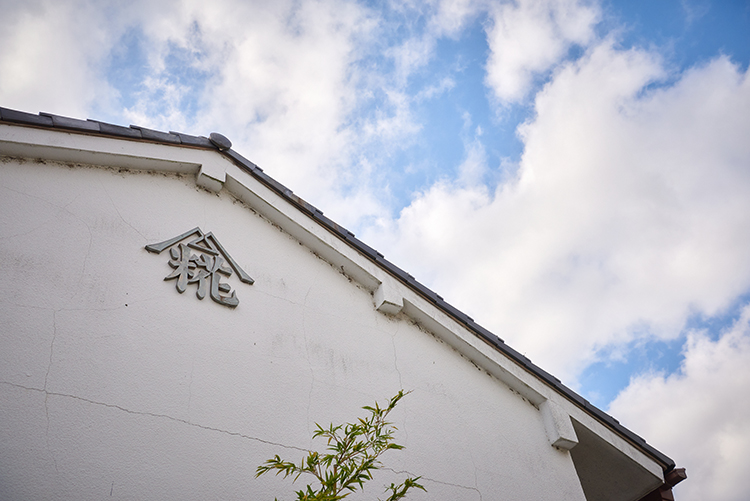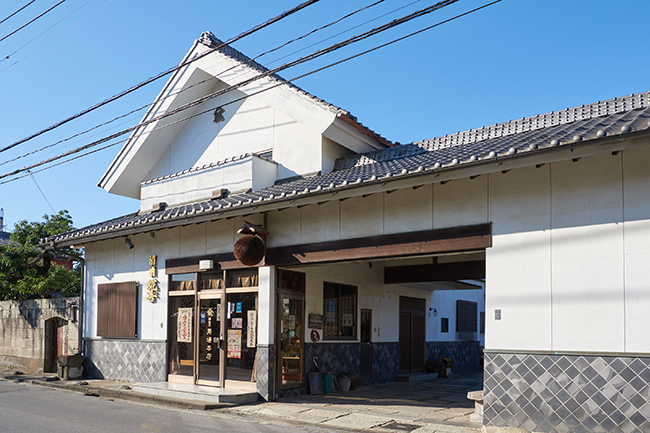Baba Honten Shuzo: Tradition and Innovation in Mirin Making
Dec 08,2022
Baba Honten Shuzo: Tradition and Innovation in Mirin Making
Dec 08,2022
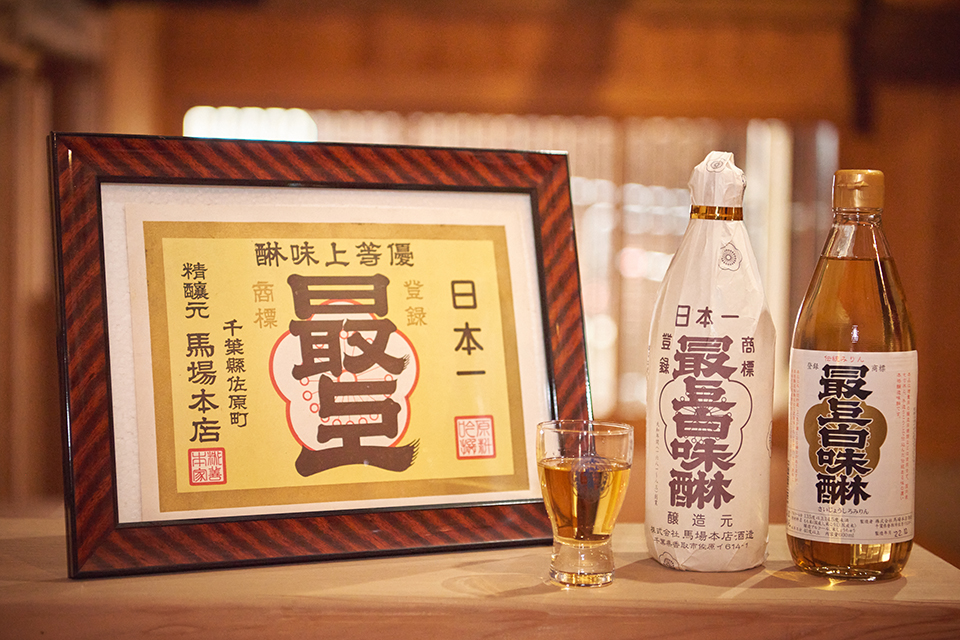

Beyond the Preservation District for Important Groups of Historic Buildings in Sawara — a riverside town in the city of Katori, Chiba, that once flourished as a river transportation hub — lies the Baba Honten Shuzo brewery, easily spotted by its red brick chimney.。
Baba Honten Shuzo’s flagship product is its Saijo Shiro Mirin rice wine. Its beautiful, perfectly clear color is a tribute to the company’s meticulous rice polishing.
For this article, we visited with Baba Yoshihiro, the 15th-generation owner of the brewery, who pours his passion into crafting mirin and saké.
Baba Honten Shuzo offers free entry to visitors to a section of its brewery that displays valuable historical objects that the brewery once used, such as branding irons, wooden tubs, and massive 18-liter itto bottles. These artifacts, paired with the brewery’s aesthetic appearance, provide a vivid reminder of how mirin and saké were brewed in the past. Records indicate that even Katsu Kaishu, a renowned statesman, naval engineer, and military commander, stayed here for several months during the Meiji period (1868 to 1912).
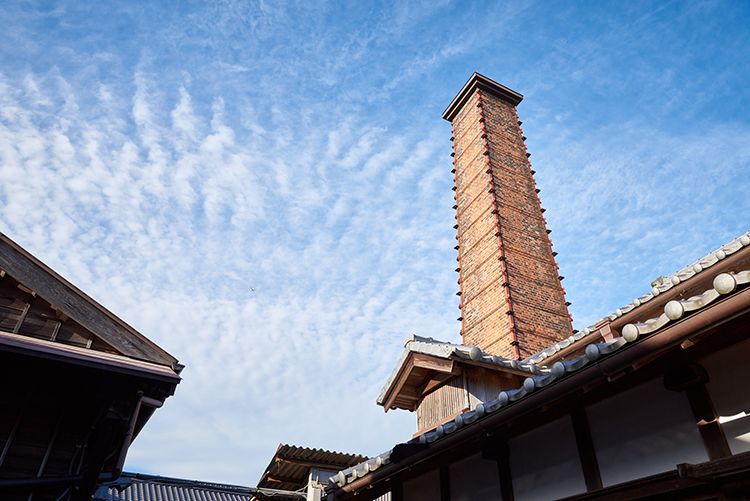
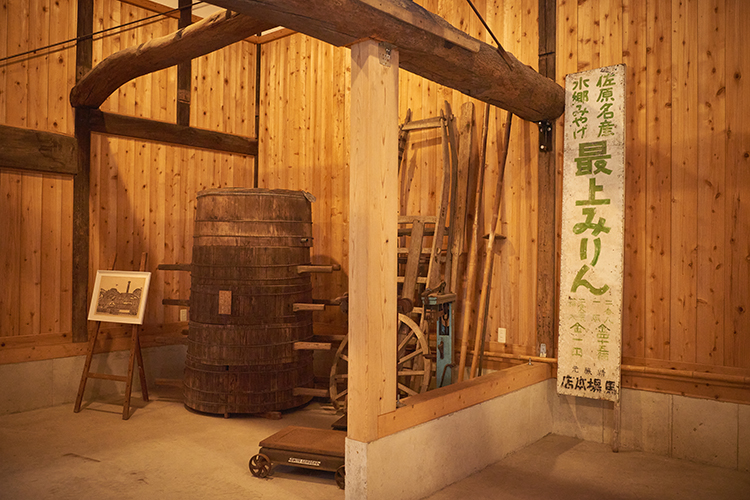
Tools used in the Meiji period are on display
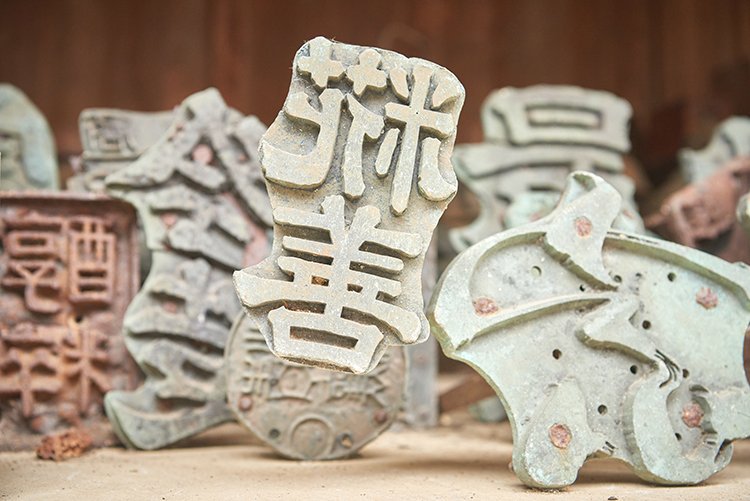
The branding iron for Kozen saké, a name taken from the store’s name Kojiya. It is said that every successive owner has had the character for zen, meaning “goodness” or “virtue”, in their name.
Baba took over the iconic Baba Honten Shuzo as its 15th-generation owner after his predecessor fell ill, cutting Baba’s apprenticeship at another brewery short. Though he was the eldest son and had always intended to take over the family business, he unexpectedly found himself leading the historic mirin and saké producer much sooner than anticipated.
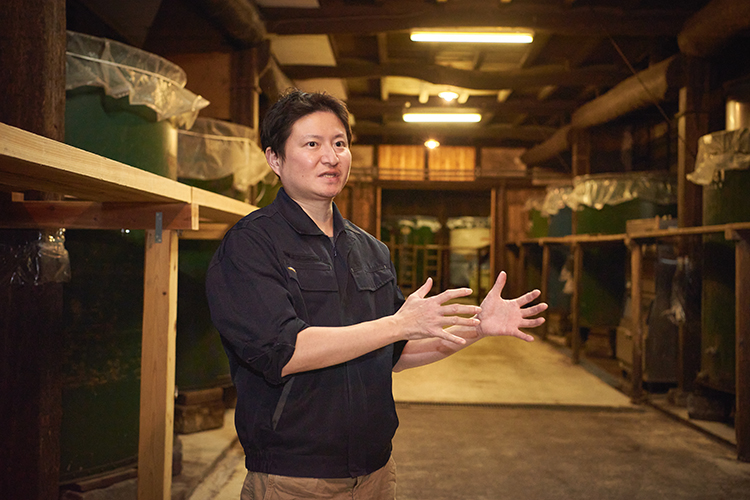
Baba Yoshihiro, the 15th-generation owner of Baba Honten Shuzo Co., Ltd.
“The one thing my predecessor drilled into me was never change the taste of the mirin. Our Saijo Shiro Mirin is used by restaurants in Chiba and nationwide, so if we were to change the taste of our mirin, it would change the taste of all these chefs’ dishes. Seasonings with unreliable tastes could be fatal to a restaurant. So I was taught to maintain the taste unchanged for the sake of our customers who use our mirin.”
This is why Saijo Shiro Mirin, which continues to follow the same production method since the late Edo period (1603 to 1868) and is one of only a few handcrafted mirin products made in the traditional way, has gained so many loyal customers.
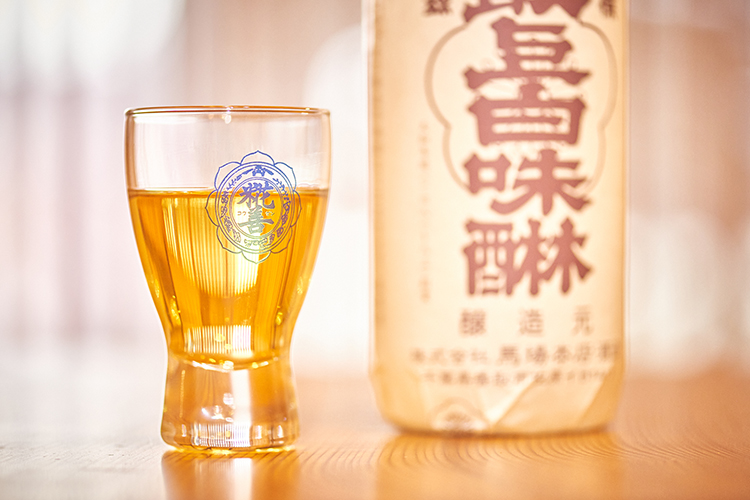
Mirin has long been divided into two types: red mirin made with rice that has a low polishing ratio, a condition of the intensive labor required to polish rice in former times, and white mirin made with rice with much higher polishing ratios. The name Saijo Shiro Mirin, which literally means the finest white mirin, is a testament to Baba Honten Shuzo’s painstaking hand-craftsmanship.
While preserving the traditions of producing mirin, Baba introduced reforms to their saké production. He discontinued the practice of hiring an outside master toji brewer to oversee production, a practice that had been followed right up to his predecessor. Now, joined by his wife — whom he met while apprenticing as a saké brewer — he crafts compelling saké with just his own employees.
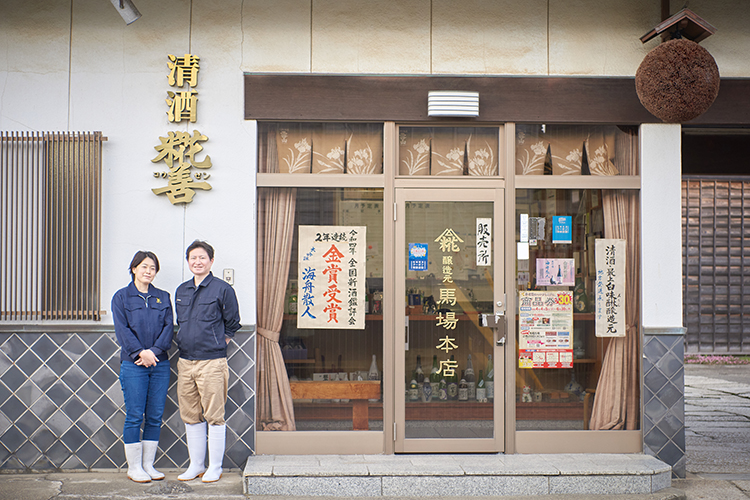
Alongside distinctive offerings like the premium daiginjo Kaishu Sanjin saké, named after the historical figure Katsu Kaishu, and the distilled Deboke shochu, made from saké lees and mirin lees, Baba is committed to producing new saké with the aim of offering even better products than last year.
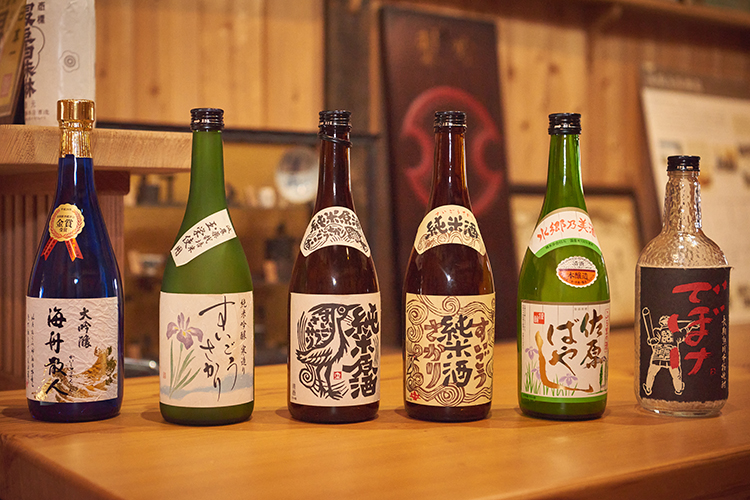
“Unlike mirin, with saké, I think it’s important to change with the times. My sole focus is to make better saké, more delicious saké.”
Let’s trace the steps in producing mirin, sticking to time-honored methods. Baba Honten Shuzo uses traditional Japanese koshiki rice steaming vats and prepares the mirin in a storehouse said to have been erected in the Tempo era (1830 to 1844).
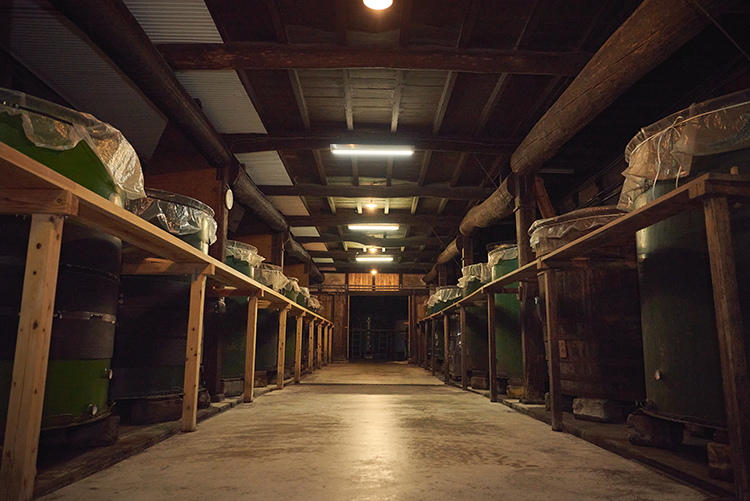
Mirin is made with glutinous rice, rice koji malt, brewing alcohol, shochu, and other ingredients. The glutinous rice is thoroughly washed and soaked in water the day before production.
Rice is steamed in koshiki. Around two tonnes of glutinous rice is steamed at one time. After steaming, the rice absorbs so much water that it expands to 3.5 tonnes. Because of the sheer volume of glutinous rice, around 10 local women are brought in to help with the processing.
Steamed non-glutinous rice is used to make koji, while the glutinous rice is used for brewing.
The glutinous rice is cooled to remove excess heat, mixed with koji rice, and then transferred to brewing tanks. The mixture is kept warm and aged in the tanks for more than 55 days, until its distinctive deep sweetness has fully developed.
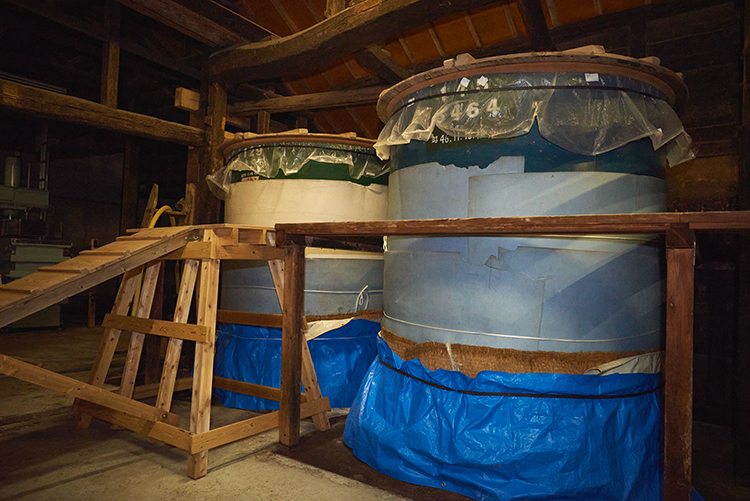
Did you know that mirin is not just a seasoning for adding sweetness or bringing out a glaze in simmered dishes? According to Baba, “mirin actually has a multitude of uses”.
“The characteristics of traditionally produced mirin are its gentle aroma, natural sweetness, and rich umami flavor. While it’s strongly associated with Japanese simmered dishes, it can be used in a surprising variety of other dishes. For example, try adding a little as a secret ingredient to a curry, or mix some into a Chinese seasoning. Adding mirin to store-bought hot-pot mixes brings out more richness, making it even more delicious.”
Until the Edo period, mirin was a popular drink among women and children, often consumed in summer to ward off the heat. The Le Un restaurant in the Nipponia Sawara Merchant Town Hotel — which was created by renovating Baba Honten Shuzo’s former south storehouse — serves a cocktail by the name of Mirin Tonic made with Saijo Shiro Mirin.
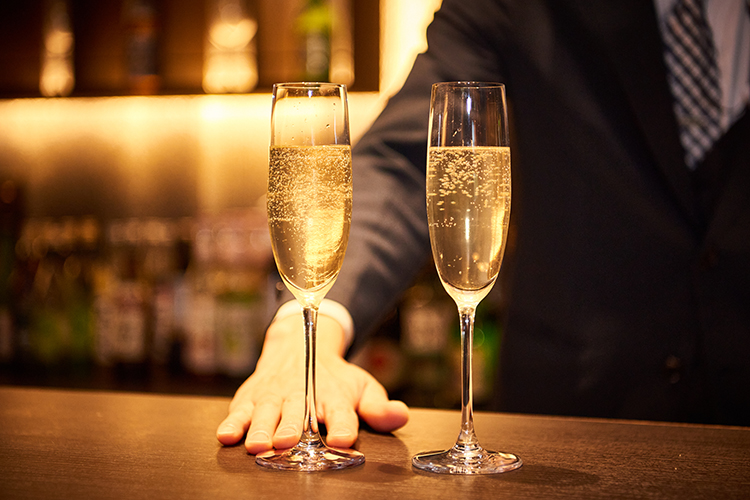
Mirin Tonic, which you can enjoy at the Nipponia Sawara Merchant Town Hotel, is a very well-received cocktail. Non-alcoholic versions are also available.
“We’d received several proposals to renovate and use the storehouse before, but we felt Nipponia had a strong commitment to the community and would dedicate themselves to sustainable regional revitalization, so we gave them the go-ahead. It’s also marvelous that they serve cocktails made with our Saijo Shiro Mirin right here in our old storehouse. While preserving the best tastes of old, we’re delighted to team up like this in our community. We hope it helps new generations discover the wonderful depth of mirin.”
Fermented French Cuisine at Sawara Merchant Town Hotel NIPPONIA
